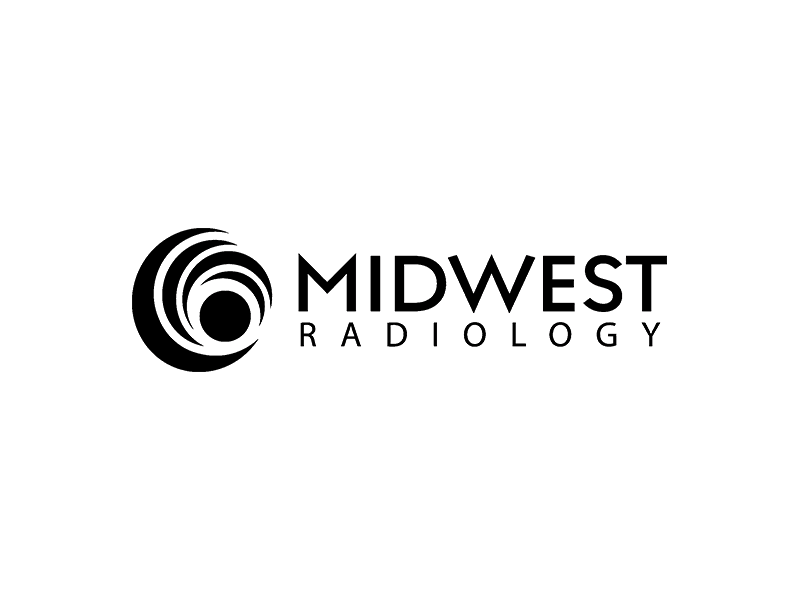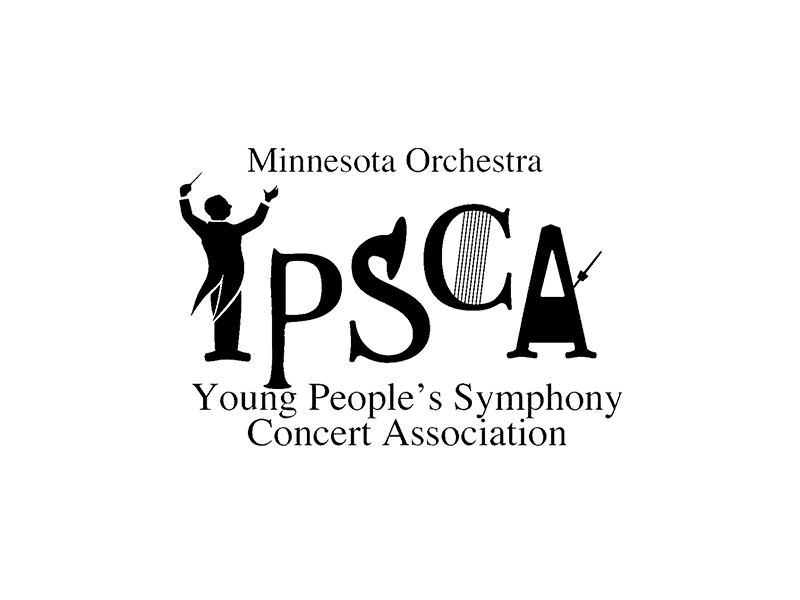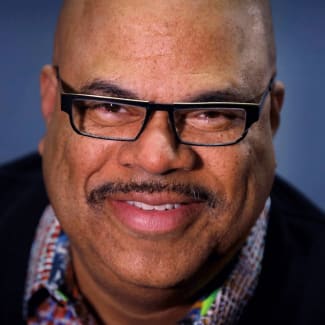
CONCERT ACTIVITIES
American Riffs
In this program, multi-talented trumpet player Charles Lazarus will show us the many intersections between classical music and the great American jazz tradition. From Duke Ellington’s It Don’t Mean a Thing if it Ain’t Got That Swing to Fats Waller’s Honeysuckle Rose, this energetic program will have you dancing your way out of Orchestra Hall! We are very excited for you to experience a concert of jazz tunes that tell the stories of these history-making composers and musicians.
Guide to the Orchestra
See instruments in action, as demonstrated by Minnesota Orchestra musicians.
About the Composers
Leonard Bernstein was one of the most famous classical composers, conductors, authors and educators of the 20th century. The son of Jewish immigrants, Bernstein was raised to respect and participate in Jewish music, culture and traditions. At the same time, he also loved the sound of American pop music such as boogie-woogie jazz and was fascinated with its energy and rhythm.
Bernstein became the assistant conductor of the New York Philharmonic in 1943 at age 25 and eventually served as its music director from 1959 to 1969. He created a popular series of narrated Young People’s Concerts with the New York Philharmonic that presented complex musical ideas with very understandable explanations and examples. Bernstein composed all kinds of music, including Broadway hits such as West Side Story, film scores, symphonies, a theater piece called Mass and music for solo instruments.
A Mass is a large piece of music that uses the words of the Christian worship ritual called the liturgical Mass and was most often sung in Latin, which for many centuries was the language preferred in the Catholic church tradition. An Offertory is one “movement,” or section, of the entire work. Bernstein’s Mass is not a traditional Mass–it is a theatrical piece that uses elements of a Mass along with new text.
Part of Bernstein’s inspiration for the piece came from the experience he had conducting in St. Patrick’s Cathedral for the 1968 funeral of Robert F. Kennedy. Even though Bernstein himself was Jewish, he found inspiration in the Catholic church and his music reflected a broad range of traditions from classical to jazz, rock and gospel, all of which are mixed together in his Mass, which was first performed in 1971.
Born: August 25, 1918, Lawrence, Massachusetts
Died: October 14, 1990, New York City, New York
Instrumentation: flute, piccolo, 2 oboes, 2 clarinets, 2 bassoons, 3 horns, 3 trumpets, 3 trombones, tuba, timpani, bass drum, suspended cymbal, tambourine, tom-tom, piano and strings
Dean Sorenson is a Minnesota-based trombonist, composer, educator and author who brings a diverse and broad range of experience to the stage and recording studio, and he is an experienced multi-genre soloist who has performed with big bands, concert bands and symphony orchestras around the world. His jazz method books are also used by students in classrooms spanning the U.S., Canada and Great Britain. Sorenson is associate professor and director of jazz studies at the University of Minnesota.
Classically American follows the development of jazz music by presenting a single melody that morphs and develops along with the history of the music. As the piece unfolds, the melody will be heard in the context of different styles of early jazz. The five sections of the piece explore African drums, marches, ragtime, Dixieland and the blues.
Born: 1963
Instrumentation: 2 flutes, 2 oboes, 2 clarinets, 2 bassoons, 4 horns, 3 trumpets, 3 trombones, tuba, timpani, snare drum, tenor drum, bass drum, cymbals, splash cymbal, suspended cymbal, cowbell, djembe, drum set, harp, piano, jazz bass and strings
John Newton had a complicated history. As a young man, he was involved in the transatlantic trading of enslaved people for many years as a master navigator. In March 1748, a severe storm threatened one of the slave ships he was sailing on, and he prayed to God for mercy. The ship was saved, and the experience caused Newton to rethink his life and his purpose. He eventually became a poet and clergyman. As he grew older, Newton became more remorseful about his work in the trading of enslaved people and became an influential abolitionist.
Amazing Grace is a hymn credited to Newton, who wrote the words to accompany a sermon on New Year’s Day, 1773. Those words were then associated with several different melodies throughout the years. In 1835, it was joined with the hymn melody “New Britain,” which is primarily how we hear it today.
Born: August 4, 1725, Wapping, London, England
Died: December 21, 1807, London, England
Instrumentation: 2 flutes, 2 oboes, 2 clarinets, 2 bassoons, 4 horns, 3 trumpets, 3 trombones, tuba, timpani, bass drum, cymbals, suspended cymbal, triangle, glockenspiel, harp, piano, jazz bass and strings
Spencer Williams was born in Louisiana, and his performance career trajectory followed the geographic path of the development of jazz. From New Orleans he went on to perform in Chicago where he moved in 1907 before moving to New York around 1916. Williams was a very prolific songwriter. His other pieces include I Ain’t Got Nobody, Royal Garden Blues and I’ve Found A New Baby. In addition to living in New Orleans, Chicago and New York, Williams also lived in Europe. In 1970 he was posthumously inducted into the Songwriters Hall of Fame.
Williams wrote Basin Street Blues in 1928 while living in New York, and the song was recorded that same year by the famous trumpet player and singer Louis Armstrong. Basin Street is in New Orleans, in a district known as Storyville. It has been recorded by many jazz and pop artists over the years and is a staple of the traditional jazz canon.
Born: October 14, 1889, New Orleans, Louisiana
Died: July 14, 1965, Flushing, New York
Instrumentation: trumpet, piano and drum set
Isolina Carrillo was one of Cuba’s most famous popular musicians. She was born into a musical family and made her debut as a pianist at just 11 years old. She went on to study at the Municipal Conservatory of Havana. As a composer, she was most known for her boleros, guarachas and sones.
Dos Gardenias was composed in 1945 and became an international hit when it was recorded by the Buena Vista Social Club in 1996. It is written the bolero style, which has different meanings depending on where and when the music was composed. Early bolero was a slow dance that was very popular in Spain in the mid- to late- 1700s. The Cuban bolero emerged in the late 1800s in Havana and typically features lyrics that deal with love.
Born: December 9, 1907, Havana, Cuba
Died: February 21, 1996, Havana Cuba
Instrumentation: trumpet, piano, jazz bass and strings
John Birks “Dizzy” Gillespie is on equal footing with Louis Armstrong and Miles Davis as being one of the most influential trumpet players in jazz history. He was a virtuoso trumpet player who was at the center of many of the key developments in jazz that helped make it what it is today. A Night in Tunisia brings together two of these developments: Bebop and the influence of Latin music in jazz.
Bebop is a style of jazz that originated in New York in the late 1930s and early 1940s. At that time, the most popular music of the day was Big Band swing which was easy to sing and dance to. At the same time, musicians such as Dizzy Gillespie, saxophonist Charlie Parker and others were gathering in music clubs in Harlem developing a new style of music that was decidedly different. Bebop featured songs with very angular melodies that leapt all over the place, instead of more stepwise. Likewise, the rhythms featured shifts of accent and tempos too fast to dance to. These pioneering Black musicians were making their own music partly to protest their treatment by society at the time.
In 1947, Gillespie was introduced to Cuban percussionist Chano Pozo through band leader Mario Bauza. Pozo then went on to play drums in Gillespie’s Big Band at a Carnegie Hall performance and on tour to Europe. Together, they composed other jazz classics including Manteca and Tin Tin Deo.
Born: October 21, 1917 Cheraw, South Carolina
Died: January 6, 1993, Englewood, New Jersey
Instrumentation: trumpet, piano and drum set
George Gershwin was one of America’s greatest musicians, most often credited with bringing jazz to the orchestra and large audiences around the world with Rhapsody in Blue, An American in Paris and the opera Porgy and Bess.
Gershwin was born September 26, 1898, in Brooklyn, New York, and named Jacob Gershowitz. His parents, who had immigrated from Russia, later changed the family name to Gershwin. He became interested in music at an early age after hearing a friend play in a violin recital. His parents bought his older brother Ira a piano, although it was George who played the instrument more. At age 15, he quit school and began to work as a musician, writing songs for “Tin Pan Alley,” the New York area for popular music. His first major orchestral work was Rhapsody in Blue, written in 1924, and remains his most popular.
Gershwin’s most ambitious composition is the opera Porgy and Bess, written in 1935, which takes place in the fictional all black neighborhood of Catfish Row in Charleston, South Carolina. Gershwin’s opera was based on a play, which itself was based on an earlier novel by DuBose Heyward published in 1925. It tells the story of Porgy, a street beggar living in the poor section of Charleston, South Carolina. Some of the Black characters in the novel speak Gullah, a creole language that developed among the Gullah people of coastal South Carolina and Georgia. In 1927, the novel was adapted into a play of the same name by DuBose Heyward’s wife, Dorothy Heyward. The opera was produced in 1935, and the title was changed to Porgy and Bess to make the opera unique from novel and the play.
Summertime is among the most famous pieces from the opera. It is a lullaby and appears throughout the show. The song has been called one of Gershwin’s finest compositions and has been recorded by many artists.
Born: September 26, 1898, Brooklyn, New York
Died: July 11, 1937, Los Angeles, California
Instrumentation: 2 flutes, 2 oboes, 2 clarinets, 2 bassoons, 4 horns, 3 trumpets, 3 trombones, tuba, timpani, bass drum, cymbals, suspended cymbal, triangle, glockenspiel, vibraphone, chimes, harp, piano, jazz bass and strings
Edward Kennedy Ellington was born in Washington, D.C. He was nicknamed “Duke” by friends because of his neat appearance and proud character. His parents, Daisy Kennedy Ellington and James Edward Ellington, taught Duke to understand the power of music.
Ellington’s piano lessons began at age 7 or 8, but he was more interested in baseball at that age. His first job was selling peanuts at games of the Washington Senators, the team that later moved to Minnesota and became the Twins. At age 14, he started sneaking into Frank Holliday’s poolroom so he could hear ragtime music. Later, he sought out other ragtime musicians in Washington D.C., Philadelphia and Atlantic City. His interest in the piano was rekindled after hearing pianist Harvey Brooks. Ellington said later: “When I got home, I had a real yearning to play. I hadn’t been able to get off the ground before, but after hearing him I said to myself, ‘Man, you’re going to have to do it.’”
Ellington dropped out of high school three months before graduation to become a professional musician. In 1923, he moved to New York City. He played at Harlem’s legendary Cotton Club, known for its jazz music. Listeners from all over the country heard his band on the radio program From the Cotton Club. The band would later go on to tour around the world.
It Don’t Mean a Thing (If it Ain’t Got That Swing) was written by Ellington in 1931, although his longtime close collaborator Billy Strayhorn may have had a hand in it as well, with lyrics by Irving Mills. The title was based on the oft-stated credo of Ellington's former trumpeter Bubber Miley. The song became famous, Ellington wrote, “as the expression of a sentiment which prevailed among jazz musicians at the time.” Probably the first song to use the phrase “swing” in the title, it introduced the term into everyday language and presaged the swing era by three years. It has been performed and recorded by many artists and is instantly recognizable around the world.
Born: April 29, 2899, Washington, D.C.
Died: May 24, 1974, New York City, New York
Instrumentation: 2 flutes, 2 oboes, 2 clarinets, 2 bassoons, 4 horns, 3 trumpets, 3 trombones, tuba, timpani, bass drum, cymbals, suspended cymbal, large shaker, triangle, vibraphone, harp, piano, jazz bass and strings
Program notes by Michael Divino except where noted.
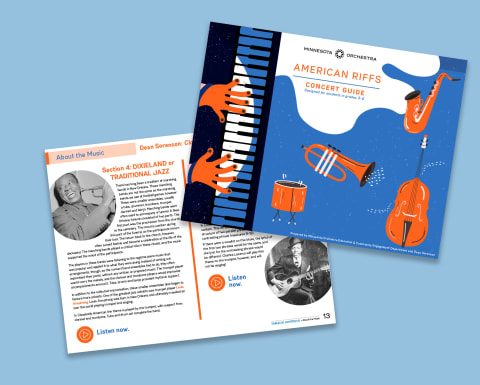
Teacher Activities for American Riffs
Explore our concert guide designed for use in the classroom—including activities, flashcards, and more.
Read a letter about the performance from Charles Lazarus, Trumpet and Host.
Artists
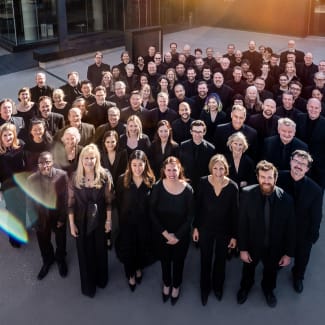
The Grammy Award-winning Minnesota Orchestra, now in its second century, ranks among America’s top symphonic ensembles, with a distinguished history of acclaimed performances in its home state and around the world; award-winning recordings, broadcasts and educational engagement programs; and a commitment to intentionally build concert programs to feature more works by composers of color, exploring music both contemporary and historic. This past fall, Danish conductor Thomas Søndergård began his tenure as music director.
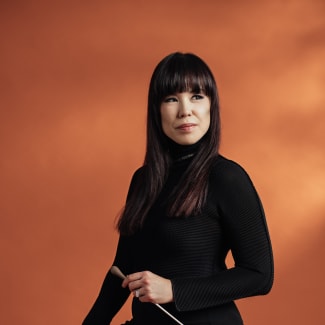
Sarah Hicks is the Minnesota Orchestra’s principal conductor of Live at Orchestra Hall, a role in which she oversees planning for and conducts many concerts in the broad-spectrum series of popular music, jazz, Broadway classics, movie scores and other genres. She also conducted the Inside the Classics and Sam & Sarah series for ten seasons.
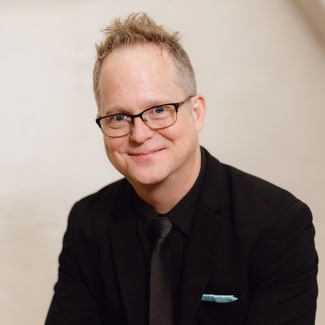
Trumpeter Charles Lazarus is a member of the Minnesota Orchestra and a multi-faceted musician who has charted a unique course as performer, composer, producer and band leader. His career has included tenures in several of the best-known brass ensembles in the world, including Dallas Brass, Meridian Arts Ensemble and Canadian Brass.
As a soloist, composer and bandleader, Lazarus has created four original crossover orchestral programs featuring his various ensembles: “A Night in the Tropics,” “American Riffs,” “Fly Me to the Moon” and most recently “The New American Songbook” featuring the Grammy Award-winning family vocal quintet The Steeles. On “Merry & Bright,” his annual program of fresh takes on holiday favorites, Lazarus is joined by vocalists, a children’s choir and an all-brass big band.
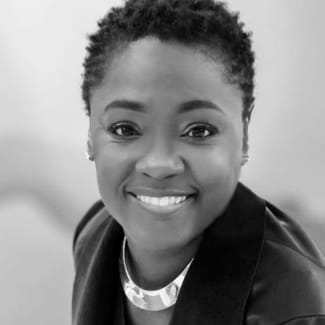
Tonia Hughes Kendrick is notably among Minnesota’s most gifted artists, acclaimed for her transparent delivery that leaves audiences with a poignant electricity. Being ever willing to take on a challenge, and having an openness to engage in culturally diverse, what she calls “unusual” collaborations, has catapulted her career. Fusing her rich gospel background with the folk singing of Larry Long or the world-class trumpeting of Charles Lazarus with the Minnesota Orchestra or with a Flamenco at The Lab Theater defies categorization and is a further testament of her genre-bending talent.
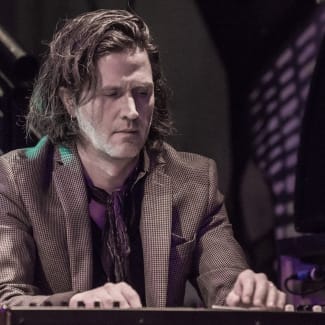
Best known for his extensive work with Prince in the 1990s, Tommy Barbarella has a reputation for excellence and versatility extended over the following two decades by touring, recording and performing with the likes of Art Garfunkel, Mavis Staples, Jonny Lang, Nick Jonas, Italian superstar Giorgia and Minneapolis supergroup Greazy Meal. He has contributed his talents to Hollywood features by iconic directors like Spike Lee, Robert Altman and Marc Forester, as well as composing award-winning commercial tracks for Nike, Budweiser, Audi and hundreds of other organizations.
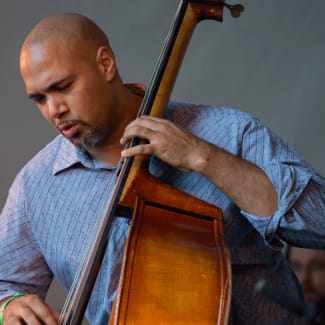
Jeff Bailey has performed in a wide variety of musical settings as a musician, composer, sound designer, producer and educator. He has performed with world renowned artists including Craig Taborn, Joey Arias, The Steeles, James Carter, Joey McIntyre (New Kids on the Block), Eric Gravatt, Charles Lazarus, Rodney Jones, Doc Severinsen, the Minnesota Orchestra, the Saint Paul Chamber Orchestra, Wessel Anderson, Pia Toscano, Jonatha Brooke, Geoff Keezer, Andres Prado, Chastity Brown, “Doc” Martin, Fareed Haque, Justin Robinson, Charley Drayton and James Moody.
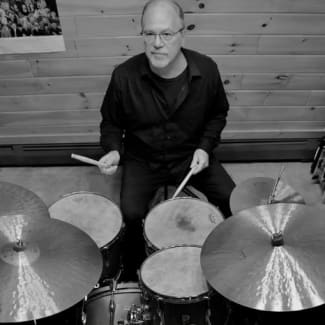
David Schmalenberger recently performed on drumset/percussion with the Laura Caviani Trio, the Bill Simenson Jazz Orchestra, Pat Frederick and Low Company, the Steeles, Karrin Allyson, Marilyn Maye, Take That Back!, Cantus, Rebel Fiddle, DAT Trio and and the Jazz Explosion Big Band. He also recently recorded with vocalist Connie Evingson (Sweet Happy Life), guitarist David Singley (Good Hope), trumpeter Chuck Lazarus (Lovejoy and Merrier & Brighter), the Laura Caviani Trio with Chris Bates (Mysterious Thelonius and Confluence), Vicky Mountain and David Martin (Play On), Jerry Kosak (New Possibilities) and the Bill Simenson Jazz Orchestra (Big Alpaca).
Sponsored By
Thomas* and Mary Lou Detwiler
Mary Ann Feldman Music Education Fund
CORPORATE & INSTITUTIONAL SPONSORS


